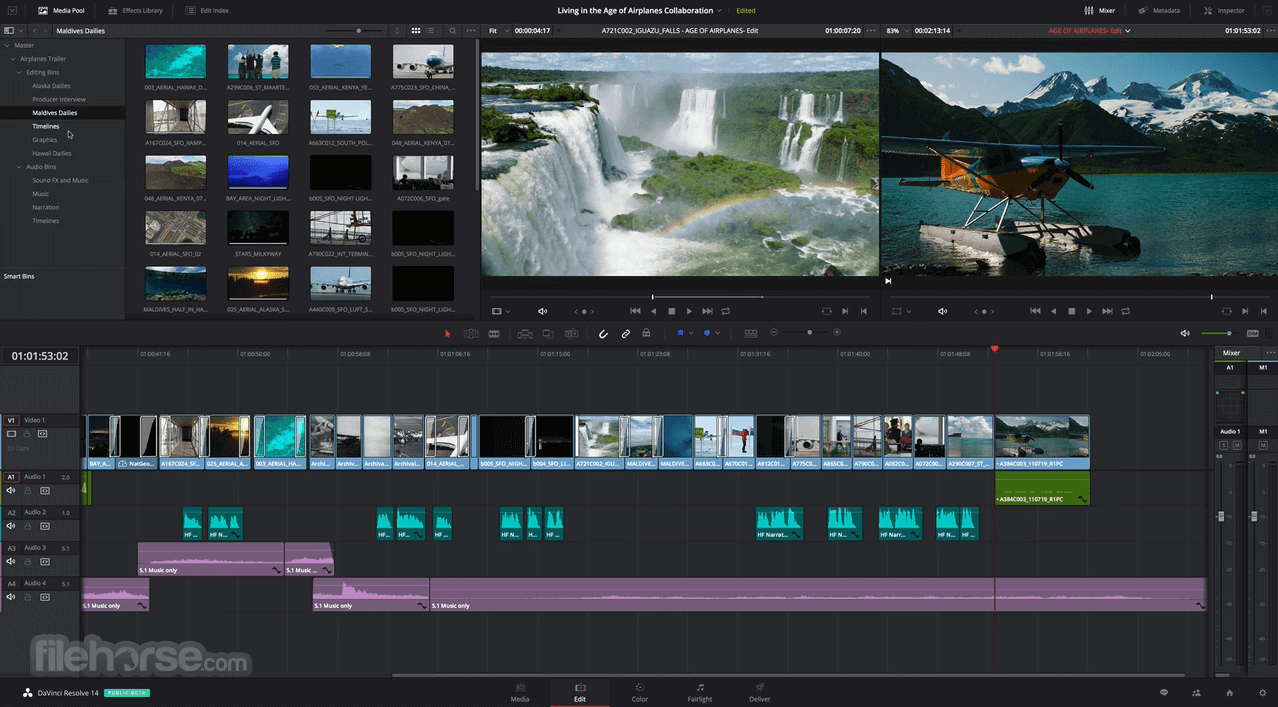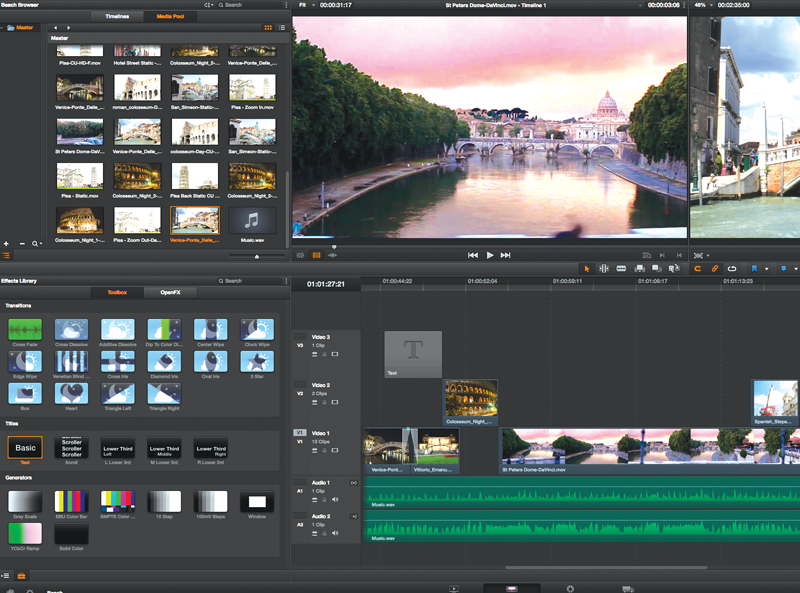
- #DAVINCI RESOLVE LITE NOT FOUND INSTALL#
- #DAVINCI RESOLVE LITE NOT FOUND ARCHIVE#
- #DAVINCI RESOLVE LITE NOT FOUND SOFTWARE#
#DAVINCI RESOLVE LITE NOT FOUND INSTALL#
sudo apt-get install fakerootįor Resolve 15.x you also need xorriso: sudo apt-get install xorriso When you have unpacked the archives and have all the needed files in the directory it's time to assemble the new *.deb file using MakeResolveDeb. Makeresolvedeb_1.5.1_multi.sh Run MakeResolveDeb You should now have the following files in the directory: DaVinci_Resolve_Studio_17.3.1_n Tar zxvf makeresolvedeb_1.5.1_multi.sh.tar.gz Unzip DaVinci_Resolve_Studio_17.3.1_Linux.zip Open up a new terminal window and go to the directory where you downloaded the Resolve installer and MakeResolveDeb and unpack both archives.
#DAVINCI RESOLVE LITE NOT FOUND ARCHIVE#
Download MakeResolveDebĭownload the latest version of the MakeResolveDeb *.tar.gz archive from this website and put it in the same directory as the Resolve installer *.zip archive.įrom now on it's easiest to continue in the terminal. Go to and download the official installer *.zip archive for DaVinci Resolve or DaVinci Resolve Studio for Linux and save it into a new empty directory. Instructions Download DaVinci Resolve installer I will not be liable for any losses or damages as a result of using information or tools from this web site. The information and tools are provided here at your own risk. I do not redistribute DaVinci Resolve or Fusion or provide pre-fabricated *.deb files for the products. MakeResolveDeb and MakeFusionDeb are in no way endorsed by or connected to Blackmagic Design Pty. DisclaimerĭaVinci Resolve and Fusion are products by Blackmagic Design Pty. MakeResolveDeb takes the official installer, unpacks it, and then reassembles it into a *.deb package that can be installed, and removed, using your favorite Debian package management tool. MakeResolveDeb is made for Debian and Debian based derivatives such as Ubuntu and Linux Mint. MakeResolveDeb aims to solve that issue while including the Debian specific features required for a working Resolve system. This practice will impede system reliability.
#DAVINCI RESOLVE LITE NOT FOUND SOFTWARE#
The native installer forces software components into place and modifies parts of the OS in a way that is unbeknown to the Debian The native installer will install Resolve on your Debian based system but it will violate the Debian concept of fully tracked installations. That is the only officially supported configuration.

You local grades and use colortrace to copy grades from the other timeline when you load a new XML.When you download Resolve or Resolve Studio for Linux you will get an installer made for the CentOS system described in the Resolve configuration guide. Which could be quite annoying if my film would have been 90min longĭo you know how I could avoid this problem ? So I had to manually reload the specific version I created for each clip. So I created a new XMLv2 of my new FCP sequence, and imported it in resolveĪll the grades I did before were loaded automatically as they were remote ones, that's great.īut all the clips which were linked by the red arrow and for which I created new versions (version 1, version 2, version 3, etc.), they all have loaded the version 1 only. Then I had to do some corrections of my film in FCP, and add a few more clips. So for each of these clips I've created new remote versions (version 1, version 2, version 3, etc) in order to grade them separately.

Some clips in my timeline were part of the same shot (so they were "linked" with the "red arrow" in resolve I edited a mini doc on FCP, created XML v1 and imported the timeline in resolve. I had a little problem when grading with remote versions and was wondering if someone had a solution.


 0 kommentar(er)
0 kommentar(er)
